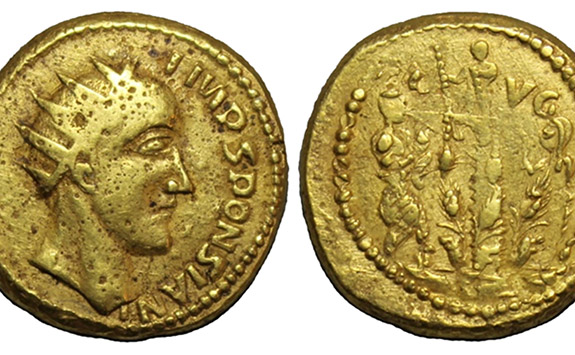Welcome to Music Friday when we bring you fabulous songs with jewelry, gemstones or precious metals in the title or lyrics. Today, we feature Fleetwood Mac's iconic 1977 hit, "The Chain," a song that represents the band's strength, love and resilience despite five decades of personal and professional obstacles.
For Christine McVie, who passed away this week at the age of 79, “The Chain” was more than a song. It was a very special silver chain bracelet given to her by fellow band member Stevie Nicks.
“Stevie gave me this chain,” she told The New Yorker in 2015. “It used to have a diamond feather on it. It’s a metaphor, you know. That the chain of the band will never be broken. Not by me, anyways. Not again by me.”
Even though Fleetwood Mac enjoyed enormous success, McVie had left the band in 1998 after being overwhelmed by a fear of flying. The other band members, including Nicks, Mick Fleetwood, John McVie and Lindsey Buckingham, continued to tour, but the band did not seem complete without Christine McVie.
Finally, at the age of 71, McVie came to the realization that she missed the audience. She wanted to tour again and asked each of her former mates, individually, if she could rejoin the band. Each was thrilled to have her back, although Buckingham maintained one caveat: She couldn’t waltz in and waltz back out again. She had to be in it “for the whole nine yards.”
McVie agreed, worked with a psychiatrist to get her past her phobia, and rejoined the band just in time for their 33-city North American tour, which opened in September of 2014.
Every Fleetwood Mac concert starts off with the steady, thumping, rhythmic instrumental lead-in to “The Chain,” the only song on the 1977 Rumours album to be credited to all five band members. The song was literally spliced together from combinations of several previously rejected elements.
The song originally represented the internal fractures — both romantically and professionally — of the band members, but eventually came to symbolize their triumph in staying together.
The Rumours album sold more than 45 million copies and is one of the best selling albums of all time. In total, the band has sold more than 120 million albums worldwide.
Born in Lancashire, England, in 1943, McVie developed her love for music at the age of 11 and continued her classical training until she was 15. She originally studied sculpture at the Moseley School of Art in Birmingham and had aspirations of becoming a teacher.
But her professional interests started to change when she was asked by two friends to join a band called Sounds of Blue. After college, she played keyboards and sang background vocals for the blues band Chicken Shack under the name Christine Perfect.
Christine married Fleetwood Mac bassist John McVie in 1968 and joined his band in 1970 as a singer and keyboardist. Despite divorcing in 1976, the couple continued to maintain a close friendship and professional partnership.
Her Fleetwood Mac bandmates were collectively heartbroken after learning that McVie died on November 30 after a brief illness.
Mick Fleetwood wrote on Instagram, "Part of my heart has flown away today. I will miss everything about you Christine McVie. Memories abound… they fly to me."
Please check out the video of Christine McVie and Fleetwood Mac performing “The Chain.” The lyrics are below if you’d like to sing along.
“The Chain”
Written by Stevie Nicks, Mick Fleetwood, Christine McVie, John McVie and Lindsey Buckingham. Performed by Fleetwood Mac.
Listen to the wind blow
Watch the sun rise
Run in the shadows
Damn your love, damn your lies
And if you don’t love me now
You will never love me again
I can still hear you sayin’
You would never break the chain
(Never break the chain)
And if you don’t love me now
(You don’t love me now)
You will never love me again
I can still hear you sayin’
(Still hear you sayin’)
You would never break the chain
(Never break the chain)
Listen to the wind blow
Down comes the night
Run in the shadows
Damn your love, damn your lies
Break the silence
Damn the dark, damn the light
And if you don’t love me now
You will never love me again
I can still hear you sayin’
You would never break the chain
(Never break the chain)
And if you don’t love me now
(You don’t love me now)
You will never love me again
I can still hear you sayin’
(Still hear you sayin’)
You would never break the chain
(Never break the chain)
And if you don’t love me now
(You don’t love me now)
You will never love me again
I can still hear you sayin’
(Still hear you sayin’)
You would never break the chain
(Never break the chain)
(Yea, keep us together)
Run in the shadows
(Yea, keep us together)
Run into the shadows
(Yea, keep us together)
Run into the shadows
(Yea, keep us together)
Run in the shadows
(Yea, keep us together)
Credit: Photo by Raph_PH, CC BY 2.0, via Wikimedia Commons.


